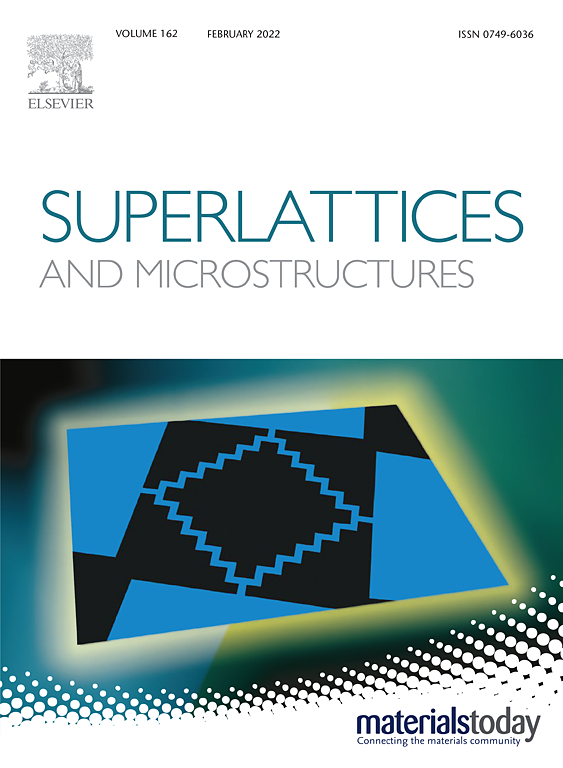Ultrasonication-assisted fabrication of porous ZnO@C nanoplates for lithium-ion batteries
IF 3.3
3区 物理与天体物理
Q2 PHYSICS, CONDENSED MATTER
引用次数: 2
Abstract
Lithium-ion batteries have made significant commercial and academic progress in recent decades. Zinc oxide (ZnO) has been widely studied as a lithium-ion battery anode due to its high theoretical capacity of 987 mAh g-1, natural abundance, low cost, and environmental friendliness. However, ZnO suffers from poor electronic conductivity and large volume variation during the battery discharge/charge process, leading to capacity deterioration during long-term cycling. Herein, porous ZnO@C nanoplates are developed to offer short ion diffusion pathways and good conduction networks for both Li ions and electrons. The porous nanoplates provide abundant active sites for electrochemical reactions with minimized charge transfer impedance. As a result, the porous ZnO@C nanoplates deliver higher performance for lithium-ion storage compared with a bare ZnO anode. Furthermore, with the introduction of reduced graphene oxide (rGO), the ZnO@C@rGO composite anode achieves a capacity of 229.3 mAh g-1 at a high current density of 2 A g-1.锂离子电池用多孔ZnO@C纳米板的超声辅助制备
近几十年来,锂离子电池在商业和学术上都取得了重大进展。氧化锌(ZnO)具有理论容量高达987 mAh g-1、天然丰度高、成本低、环境友好等优点,作为锂离子电池负极材料得到了广泛的研究。但在电池充放电过程中,ZnO的电子导电性差,体积变化大,在长期循环过程中会导致容量下降。在此,开发了多孔ZnO@C纳米板,为Li离子和电子提供了短的离子扩散途径和良好的传导网络。多孔纳米板以最小的电荷转移阻抗为电化学反应提供了丰富的活性位点。因此,与裸ZnO阳极相比,多孔ZnO@C纳米板具有更高的锂离子存储性能。此外,随着还原氧化石墨烯(rGO)的引入,ZnO@C@rGO复合阳极在2 a g-1的高电流密度下实现了229.3 mAh g-1的容量。
本文章由计算机程序翻译,如有差异,请以英文原文为准。
求助全文
约1分钟内获得全文
求助全文
来源期刊

Superlattices and Microstructures
物理-物理:凝聚态物理
CiteScore
6.10
自引率
3.20%
发文量
35
审稿时长
2.8 months
期刊介绍:
Superlattices and Microstructures has continued as Micro and Nanostructures. Micro and Nanostructures is a journal disseminating the science and technology of micro-structures and nano-structures in materials and their devices, including individual and collective use of semiconductors, metals and insulators for the exploitation of their unique properties. The journal hosts papers dealing with fundamental and applied experimental research as well as theoretical studies. Fields of interest, including emerging ones, cover:
• Novel micro and nanostructures
• Nanomaterials (nanowires, nanodots, 2D materials ) and devices
• Synthetic heterostructures
• Plasmonics
• Micro and nano-defects in materials (semiconductor, metal and insulators)
• Surfaces and interfaces of thin films
In addition to Research Papers, the journal aims at publishing Topical Reviews providing insights into rapidly evolving or more mature fields. Written by leading researchers in their respective fields, those articles are commissioned by the Editorial Board.
Formerly known as Superlattices and Microstructures, with a 2021 IF of 3.22 and 2021 CiteScore of 5.4
 求助内容:
求助内容: 应助结果提醒方式:
应助结果提醒方式:


